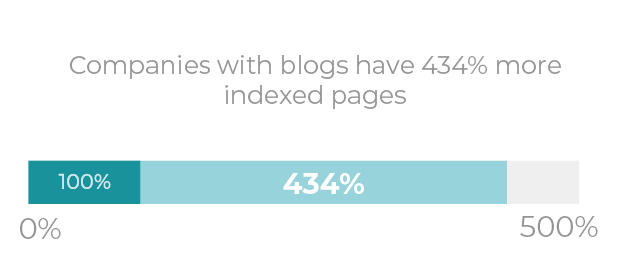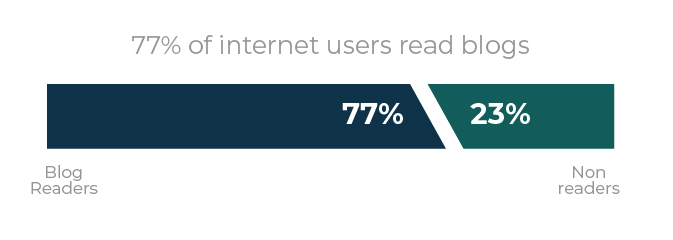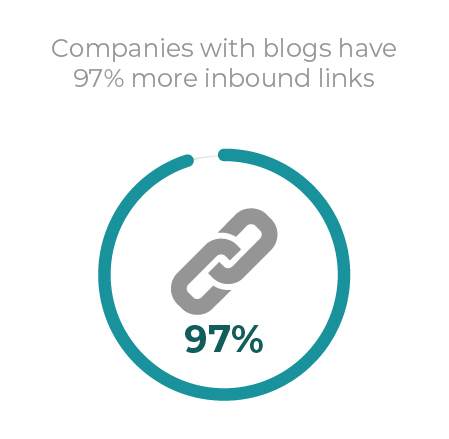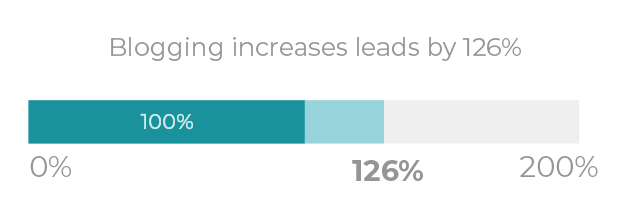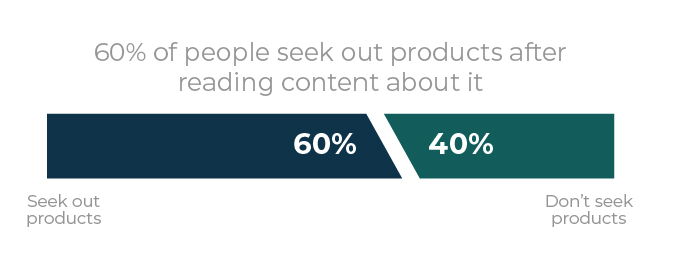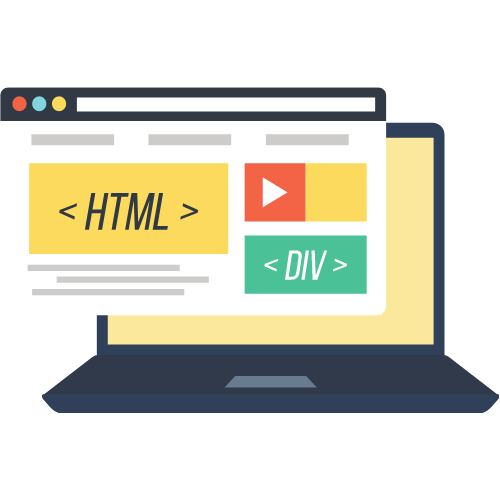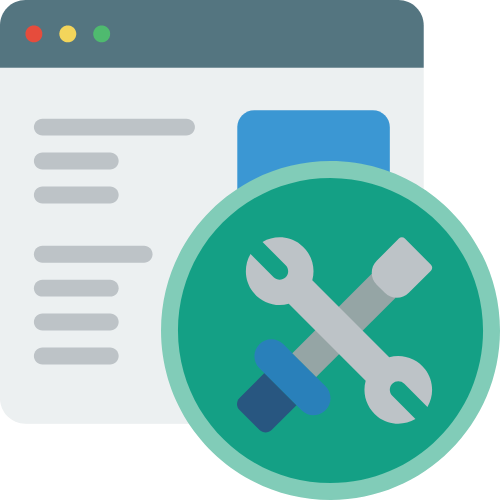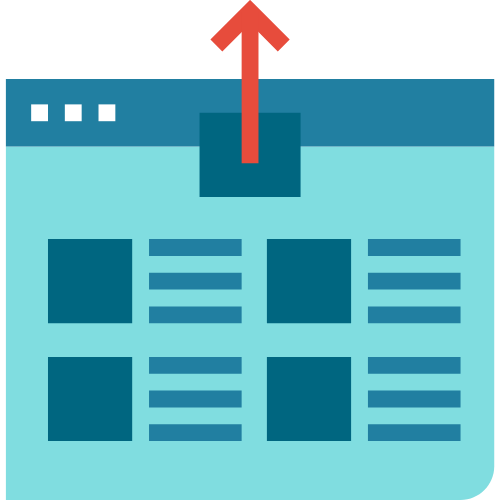- Blogging is the third most common content marketing strategy for businesses.
- Blogging can help small businesses build brand awareness, establish authority, attract new leads, and keep existing customers engaged.
- For your business blog to be successful, you need to create unique content, prioritize SEO, and post regularly.
It’s no secret that content marketing has become increasingly popular over the past several years. Companies that regularly provide relevant content about their expertise, brand, products, or services—by way of business blogging or visual media—tend to have an engaged target market. Businesses that regularly connect with their customers with valuable content can build trust, authority, and develop new clients.
One of most common types of content marketing today is business blogging; the Content Marketing Institute found that 89% of content marketers used blog posts in their content creation strategy in 2020. Companies are using blogs to position themselves as thought-leaders within their industries and to share valuable insights about their products or services.
The Content Marketing Institute’s 2020 B2C Content Marketing Benchmarks, Budgets & Trends report found that companies are using content marketing to create brand awareness, educate audiences, build credibility/trust, and generate demand/leads.
Why Is Having a Business Blog Important?
Blogs have, for the most part, become a natural extension of any website.
Not only do they improve SEO (Search Engine Optimization) ranking—which means Google will send more traffic to your website—but they are low-cost, they generate leads, and they are an effective way to engage with potential and existing clients.
Is a blog right for your business website?
Yes!
But, for it to be worth-while, you must do it right. While it may be tempting to just “wing it,” it’s important to have a solid strategy behind your blogging efforts. If you feel you don’t have the time or resources to feed your blog regularly and to pay good writers, then you may want to wait it out a bit; otherwise, your efforts will be fruitless.
The blogging world is a crowded one; to stand out from others and your competition, you need to publish high-quality content.
Benefits of Business Blogging for Small Businesses
Blogs are a great way for small businesses to level the playing field, establish authority, and gain the trust of potential clients. Let’s take a closer look at some of the main benefits of business blogging.
Build Brand Awareness
Investopedia defines brand awareness as:
“A marketing term that describes the degree of consumer recognition of a product by its name.”
Brand awareness can help your company stand out from the competition. In a world where choices abound, having people know and recognize your brand can go a long way in completing your sales funnel.
This is precisely where your business blog fits in:
Blogs can help build and strengthen brand awareness in a variety of ways:
- If your blog follows best practices for SEO, it will begin to show up in relevant searches. The higher you rank, the more likely people will “stumble” across and click on your website.
- Content raises brand awareness because it can help a company answer common questions, show personality, share opinions, and provide insights. When done right, free content can help potential customers identify to and relate with your brands, making them more likely to remember you and purchase your products.
- Content is easy to share and if what you publish on your blog is relatable and valuable, people will be willing to share it with others, which in turn will serve as “word-of-mouth marketing.”
- Blogging can build your business’ authority; when you share high-quality content—whether its research reports, updates, case studies, or opinions—people will look to your company to make informed buying decisions and they will trust that the products or services you offer are valuable and high-quality.
Attract New Leads
According to DemandMetric, companies with blogs produce, on average, 67% more leads per month than companies without a blog. The goal of an effective blog is to attract as much traffic as possible; however, not all visitors to your website blog are equal. Ultimately, you want to attract as many clients and leads as you can. While random visitors are nice, the real value is connecting with your customers — and attracting new business for your company in the form of leads. Furthermore, a great blog doesn’t just attract any leads — they attract qualified leads.
To increase your chances of attracting leads with your blog, consider the following strategies:
- Always include a call to action in your content (but don’t make this the topic of the blog post).
- Ask for visitor’s contact information in exchange for information they would find of value.
- Use interactive content.
- Create helpful content for each stage of your sales funnel.
- Offer exclusive content; even if its free, consider having a soft paywall.
- Use the right keywords.
Keeps Existing Customers Engaged
- You can use your blog to share news and updates about your products, services, and brand.
- You can share details about your products and services.
- Your blog can be a great way to share customer stories
- Showing how others are using and benefiting from your products or service can increase repeat purchases.
- A blog can be a noninvasive way to introduce customers to new products or services that they may not have considered.
Business Blogging Statistics: Key Facts and Figures
Over 409 million people view more than 20 billion pages each month. (WordPress)
Blogging is so scalable and affordable that it’s the third most common content marketing strategy for businesses. (HubSpot)
How to Set up a Business Blog?
While setting up a business blog is not rocket-science, it can still be challenging to build a high-quality blog.
Before you create your own business blog, you need to keep the following in mind:
- You will likely need to hire writers (part-time). While most can write, not everyone can write well.
- Post consistently – you might benefit from creating an editorial calendar. Numerous examples can be found on the Internet.
- Your blog needs to be visually appealing and load quickly.
The following steps are assuming that you already have a domain name, hosting provider, and website set up.
Choose a Blogging Platform
This is an important step; the wrong blogging platform can make blogging a lot harder than it really is. Depending on your technology abilities and the team you have at hand, you may want to build a platform that makes it easy to set up a blog and website—like WordPress. If you have the technical knowledge and the resources, you could build your blog and website from scratch.
Pick a Theme / Template
Below are some key things you need to keep in mind when picking out a theme or template:
- Is it responsive?
- Does it display properly on different devices (mobile, desktop, tablet)?
- Does it allow for customization (color, font, widgets, buttons, navigation, menu, etc.)?
- Has it been recently updated?
- Is there customer support available?
This is a decision that shouldn’t be made lightly. Your theme and template will affect SEO, reader engagement, and bounce rate.
While most platforms allow for creators to build their own design from scratch, it is recommended that creators choose existing templates, especially if you don’t have a savvy designer and programmer on your team.
Customize Your Blog
Once you’ve picked a template and theme, you are ready to start customizing it. Things you need to think about when customizing your blog are:
Regardless of the template or theme you pick, it’s best to aim to create a simple blog that is easy to navigate. Keep in mind that having too many things on any given page or post will make it harder for users to figure out what their next action should be.
Start Publishing Content
But before you sit down and start writing, make sure you have a content strategy in place. Many writers find it helpful to have an editorial calendar with monthly topics planned; it’s best if you establish ahead of time how often you will be publishing content on your blog—daily, weekly, or monthly.
Business Blogging Best Practices
Like everything in life, developing your blog to be successful requires practice. Review other websites of businesses in your industry for ideas. Study how companies you like and interact with produce content and blogs, noticing particularly effective or unique topics and styles that your target audience would resonate with.
Below are 35 tips to help your business blog stand out from the noise.
SEO Basics for Business Blogs
Search Engine Optimization (SEO) is an important part of any content marketing strategy. With blogs, SEO can help increase visibility, improve search ranking, and increase traffic.
Back in the day, SEO was all about including keywords within your content; however, as algorithms become more nuanced, SEO has become a much trickier trade…one made even trickier by the fact that algorithms are regularly updated.
There are three types of SEO that affect your website’s ranking:
- On-page SEO
- Technical SEO
- Off-page SEO.
When it comes to blogs, you’ll want to focus on on-page SEO. This type of SEO refers to the content on your website. Below are some tips to improve your blog’s on-page SEO.
Research Keywords
Whenever you’re brainstorming topics, you’ll want to make sure that you are basing your potential blog ideas from keyword research.
Keyword-driven content is most likely to be found online and to rank higher on search engines, which in turn will drive organic traffic to your website.
You’ll want to avoid stuffing your content with keywords; rather, experts recommend that you focus on 1 or 2 long-tail keywords when writing your blog posts. Long-tail keywords are more specific; therefore, they will resonate more with your target audience.
An example of a long-tail keyword is “how to build a business blog.” This keyword will yield better results than a short keyword like “blog post.”
Some popular platforms to research keywords include:
| Moz | SEMrush |
| Ahrefs | Google Keyword Planner |
| Keyword Generator |
Incorporate Keywords into Your Content
To get the best results from keyword-driven content, you’ll want to include the keyword(s) in the following blog parts:
| Title | Headers |
| Body | URL |
| Meta description | Image description / tag |
Ideally, you’ll include the keyword within the first 100 words of your post.
Pro tip: whenever you incorporate a keyword into your blog, make sure you do it in a natural way; otherwise, algorithms may flag it as keyword stuffing.
Internal Links
Internal links can be helpful for readers, and they are great at keeping readers on your blog for longer. If you want to learn more about internal linking, check out this guide from Moz.
Optimize Your URLs
SEO-friendly URLs are short and include your keyword. The idea is to make it easier for visitors to know the content they’re about to see. Below are some best practices for creating SEO-friendly URLs:
Revise and Update Old Content
This will not only help you to optimize past content, but it will also give you a chance to update the information and insights you’re sharing. For example, if a couple of years ago you wrote an article on Customer Service statistics, you would benefit from updating it with more up to date research.
Additional SEO Tips
- Prioritize responsive design. Responsive design will ensure that your content is present to readers in the best way depending on the device they are using.
- Aim to improve your site speed and load time.
- Optimize images.
- Include high-quality and authoritative outbound links in your content.
- Write your own meta description for each blog post.
- Use original images.
- Create a clear XML sitemap.
- Use headers correctly.
Conclusion
Business blogging allows small businesses to build brand awareness, attract new leads, and keep existing customers engaged. Research has found time and time again that blogs are a cost-effective marketing strategy that yields great results.
Setting up and maintaining a great blog takes time and effort. To maximize your chances of having a blog that converts leads into sales you need to:
- Plan ahead and post content regularly.
- Have some basic knowledge of SEO practices.
- Have strong writers writing content for you.
- Build a visually appealing blog that loads fast and is responsive.
- Publish unique content that isn’t overly sales-y.






